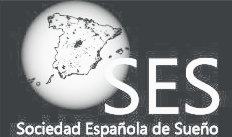Adipose tissue macrophage polarization by intermittent hypoxia in a mouse model of OSA: effect of tumor microenvironment.
Almendros I, Gileles-Hillel A, Khalyfa A, Wang Y, Zhang SX, Carreras A, Farré R, Gozal Cancer Lett. 2015 Jun 1;361(2):233-9. Epub 2015 Mar 14.
Intermittent hypoxia (IH)-induces alterations in tumor-associated macrophages (TAMs) that are associated with adverse cancer outcomes, as reported in patients suffering from sleep apnea. Adipose tissues (AT) and bone-marrow (BM)-derived cells are the inferred sources of macrophages infiltrating malignant tumors. Here, the sources of TAMs and the phenotypic changes induced by IH in the ipsilateral and contralateral AT were investigated by using a syngeneic murine solid tumor model (TC1). C57/B6 male mice were exposed to either IH or room air (RA) for 6 weeks, with TC1 cells being inoculated in the 2nd week. Macrophage content, phenotype and tissue origin were assessed in tumors, and ipsilateral and contralateral AT. IH induced a ~2.2-fold increase in TAM tumor infiltration. However, differential responses in the tumor ipsilateral and contralateral AT emerged: IH increased infiltration of preferentially M1 macrophages in contralateral AT, while reductions in macrophages emerged in ipsilateral AT and primarily consisted of the M2 phenotype. These changes were accompanied by reciprocal increases in resident and BM-derived TAMs in the tumor. IH-induced phenotypic alterations in AT macrophages surrounding the tumor and their increased infiltration within the tumor may contribute to the accelerated tumor progression associated with IH.
Ventana Científica. Diciembre 2015. Artículo 96
Adipose tissue macrophage polarization by intermittent hypoxia in a mouse model of OSA: effect of tumor microenvironment.


